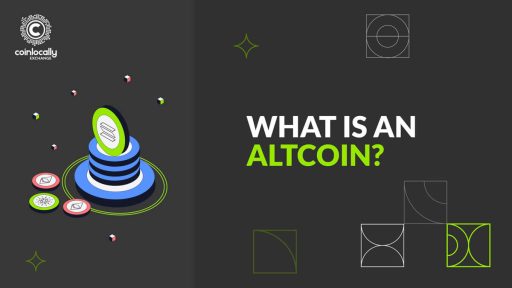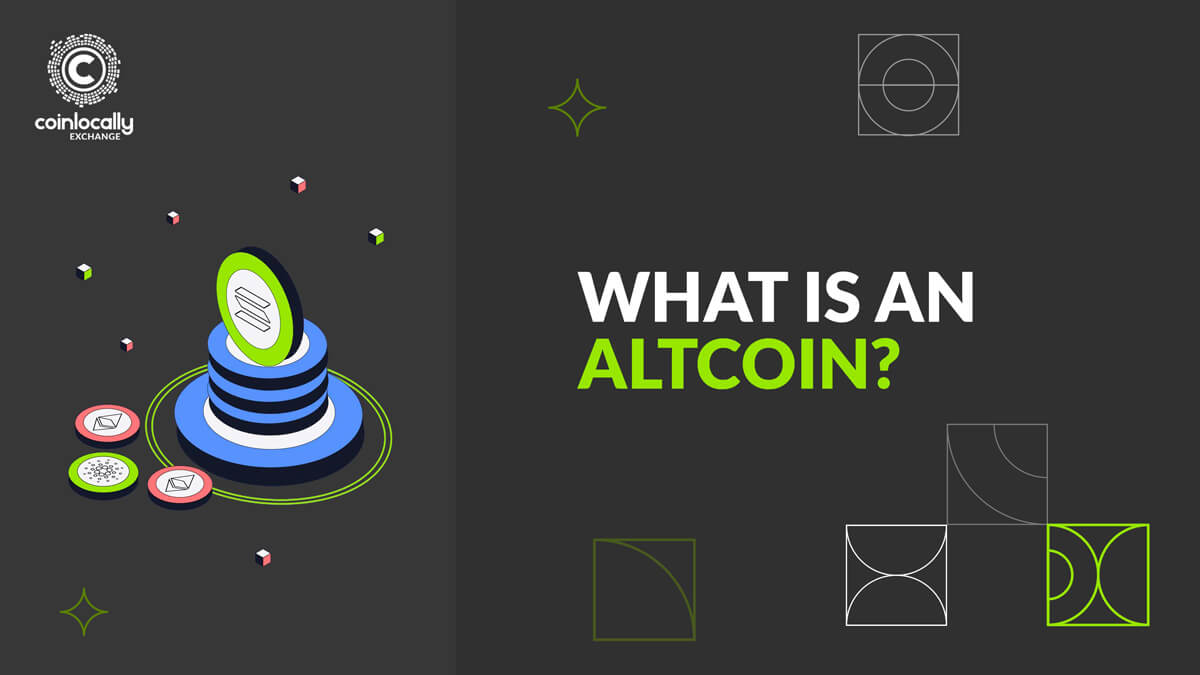Alternative digital assets, such as a coin or token that is not Bitcoin, are referred to as “altcoins.” Since Bitcoin is the first cryptocurrency, all others are referred to as “alternative” or “alternative” currencies in this terminology.
Also, read; Best altcoins to invest in 2023
Table of contents:
• What features do all altcoins have in common?
• Bitcoin forks and cryptocurrencies based on Bitcoin
• Ethereum and decentralized applications (DApps)
What is an Altcoin?
Quite often, digital assets that are technically referred to as “tokens” rather than coins are referred to as “altcoins” instead of coins. The ERC-20 tokens that are built on top of the Ethereum blockchain are the most well-known examples
There have been more than 2,000 alternative cryptocurrencies introduced since the launch of Bitcoin in 2008. In fact, through a procedure called a “hard fork,” many of these altcoins were produced as modified versions of Bitcoin. Each alternative cryptocurrency has its unique functions despite certain similarities.

The Proof of Work consensus algorithm is used in the majority of the alternative coins that split off from Bitcoin. Several cryptocurrencies are experimenting with different strategies for achieving agreement in dispersed blockchain networks, though.
The most popular Proof of Work substitute is the Proof of Stake consensus algorithm, but there are also significant examples of Proof of Burn, Proof of Authority, and Delayed Proof of Work consensus algorithms.
It is generally acknowledged that the name “altcoin” is neutral, despite the fact that some users think it is insulting or humiliating. The term is not intended to imply either a good or negative opinion of the asset being discussed.
On the other side, the term “Shitcoin,” for example, carries a negative connotation and is often regarded as mocking.
With the exception of Bitcoin, all of the more than 1,500 cryptocurrencies listed by Coinmarketcap in April 2018 are classified as “altcoins.”
The top altcoins on Coinmarketcap in August 2019 according to market capitalization were Ethereum, Ripple, Bitcoin Cash, Litecoin, Tether, Binance Coin, EOS, Bitcoin SV, Stellar, Cardano, and Monero, sorted in descending order.
Altcoins can be quite new. This implies that several altcoins that were among the top 10 in terms of market capitalization in the early days of cryptocurrencies are either no longer in existence or are less common than they once were.
An essential statistic for determining a cryptocurrency’s market worth is its “market capitalization” or “market cap.” This amount is calculated by multiplying the price of a cryptocurrency at the moment by the total number of coins available on the market (known as the circulating supply).
[elementor-template id=”5981″]
What features do all altcoins have in common?
Bitcoin, Ether, and other cryptocurrencies can be used for payments on different platforms outside of their native environment. Many alternative coins only provide distinct unique features, such as various distribution strategies or mining algorithms, and are not all that, unlike Bitcoin.
Nonetheless, the majority of altcoins also perform the functions of cryptocurrencies, namely acting as a form of decentralized peer-to-peer payment processing and a store of value.
They might provide faster transactions or more secrecy compared to other coins. Once more, certain altcoins were created for extremely specific use cases. They depart from the peer-to-peer payment network model that was the foundation of Bitcoin.
Altcoins are digital assets that are not Bitcoin, such as ERC-20 tokens built on top of the Ethereum blockchain. With the exception of Bitcoin, all of the more than 1,500 cryptocurrencies listed by Coinmarketcap in April 2018 are classified as “altcoins”. Market capitalization is calculated by multiplying the price of a cryptocurrency at the moment by the total number of coins available on the market.
Bitcoin forks and cryptocurrencies based on Bitcoin
The technical foundation of Bitcoin serves as the basis for a number of other cryptocurrencies. They often have a fixed supply and must be mined using a technique known as Proof-of-Work. Litecoin is the most well-known of these cryptocurrencies.
Namecoin was the first alternative cryptocurrency to split from Bitcoin. In April 2011, Namecoin was released and is based on the Bitcoin source code. Like Bitcoin, it has a 21,000,000-coin maximum.
According to the creators of the project, Namecoin is “an experimental open-source solution that promotes decentralization, security, censorship resistance, privacy, and speed of some components of the internet infrastructure, such as DNS and identities.”
Litecoin
Litecoin was developed as an alternative currency to serve as the “silver” to Bitcoin’s “gold.” Whereas it takes the Bitcoin network little over 10 minutes on average to confirm a transaction, the Litecoin network only needs roughly 2.5 minutes.
Litecoin originally aimed to make mining more accessible to the typical user. Scrypt is a cryptographic technique that Litecoin uses that is fundamentally distinct from Bitcoin.
Ethereum and decentralized applications (DApps)
The blockchain-based cryptocurrency Ether, which is used by Ethereum, is now the second-largest cryptocurrency by market capitalization.
In contrast to Bitcoin, Ethereum’s goal is to support peer-to-peer transactions as well as act as a kind of operating system for decentralized apps (DApps) that are free from downtime, fraud, or any other type of third-party interference.
As a result, machines in the decentralized Ethereum network serve two purposes: they develop smart contracts and they record transactions.
DApps are developed on the Ethereum blockchain and have the benefit of decentralized computation. For using the network’s computing power, developers must pay in ether. The Ethereum network is not governed by a single organization or authority, and its crucial parts are dispersed.
Therefore, it is virtually hard to attack the network, giving clients access to more dependable and secure apps.
The technical specification for smart contracts used to implement tokens on the Ethereum blockchain is called ERC-20.
Dogecoin – the fun cryptocurrency
On a lighter side, many cryptocurrencies have been created with the purpose of essentially mocking Bitcoin. In this regard, Dogecoin stands out as the most notable alternative currency. It was created in 2013 as a “joke currency” based on a well-known internet meme. Unexpectedly, Dogecoin gained popularity swiftly and, as of August 2019, had a market value of about US$298.770,000.
Dogecoin has fewer major commercial applications than other altcoins, but it is well-liked by social media users who tip other users with Dogecoins when they post fascinating material, making Dogecoin the internet’s preferred tipping money.
IOTA and the Tangle
IOTA is a well-known open-source network that was launched in 2015. The incentives and benefits are the same for each actor using the IOTA network. The reward is the validation of the new participant’s own transaction after undertaking computational work to verify two earlier transactions.
Participants join a “pay-it-forward” system of transactions in a structure known as the “Tangle” as a result. The network is free to use, there are no additional financial incentives, and it has tremendous scalability. The faster transactions are validated, the more active the IOTA community is.
Pantos – the multi-blockchain token system
On the other hand, the Pantos project aims to establish new guidelines for decentralized cross-chain token transfers. Pantos’ ERC 20 counterpart is PAN. PAN was designed to be the first token with a universal denominator. The Pantos technology’s goal is to make it possible to move assets from one blockchain to another.
Let’s use the stock of a company as an example use case and imagine if ownership shares in that company were to be tokenized on a blockchain and issued as utility tokens. This would allow for stock trading on the cryptocurrency market.
But, if five different projects released a utility token for the same stock on five different blockchains, it would result in significant price variations.Users can choose which of the five blockchains they prefer when Pantos offers a universal denominator solution.
Bitcoin is the basis for a number of cryptocurrencies, such as Namecoin, Litecoin, Ethereum, Dogecoin, IOTA, and Pantos. Namecoin is an experimental open-source solution that increases decentralization, security, censorship resistance, privacy, and speed. Ethereum is the second-largest cryptocurrency by market capitalization, and ERC-20 is the technical specification for smart contracts.
Can altcoins “die”?
Yes. In fact, many altcoins that were introduced after the creation of Bitcoin flopped or weren’t intended to survive at all, frequently as a result of being scam ventures or pump-and-dump coins.
Lack of utility, however, is the key factor contributing to an altcoin’s failure. This indicates that an altcoin’s use case overlaps with that of a different, more well-known cryptocurrency because both of them provide users with extremely similar features and services. More than 1,000 cryptocurrencies traded for less than US$ 0.001 in 2018 alone, failing.
The primary cause of an altcoin failing, however, is a lack of utility, which means that its use case overlaps with that of another, more widely used altcoin that provides a very similar service to the user.
What to consider before buying Altcoins
It would be riskier to buy relatively unknown altcoins than to put money into the most popular cryptocurrencies. When investing in alternative currencies in the hopes of winning the lottery, keep the following things in mind:
• The only factor driving cryptocurrency is emotion. Cryptocurrency is mostly influenced by sentiment because, unlike stocks, it is typically not backed by the assets or cash flow of the underlying corporation. Altcoins depend on traders becoming or remaining more hopeful for their prices to rise because sentiment can fluctuate from outrageously euphoric to depressingly negative.
• Investors herd around the most popular coins. Due to the emotional nature of cryptocurrencies, investors tend to cluster around the most well-liked coins, concentrating on Bitcoin, Ethereum, and a relatively small number of other coins.
A new altcoin emerges every so often; purebred examples include Dogecoin and Shiba Inu, while countless others are unknown. In other words, if an alternative currency loses favor, it might never regain it, costing you most or perhaps all of your investment.
• Do you possess any funds that you could afford to lose? Ask yourself if you’re just betting with money you can afford to lose given the kind of severe dangers associated with altcoins as well as their volatility.
Your rent money or other necessary finances should not be invested in the cryptocurrency market or any other financial market.
• Pay attention to an altcoin’s technological capabilities. Look at an altcoin’s technical potential before investing. For instance, Solana, an altcoin, has had tremendous growth since it offers excellent functionality at a low price.
A cryptocurrency’s features may help keep it at the forefront of the public’s imagination and therefore make it an attractive trading vehicle that traders can herd around.
It’s crucial to realize that you could lose all of your money when investing in highly speculative assets like cryptocurrencies. As the market has experienced in 2022, traders should at the very least prepare for significant volatility.
Altcoins can “die” due to lack of utility, which means that their use case overlaps with that of another, more widely used cryptocurrency.
Investors should consider factors such as emotion and sentiment when investing in alternative currencies, such as Bitcoin, Ethereum, and other coins, and pay attention to their technological capabilities before investing.
The Bottom Line
What is an altcoin? Some market participants assert that Bitcoin is the origin of all cryptocurrencies and that up to 99 percent of all altcoins will ultimately be worthless. A reliable cryptocurrency should be created in the long run for a very specific use case, to meet a clearly defined need and purpose inside a reasonable regulatory framework, with steady development of mass adoption to retain its value in the long run.






